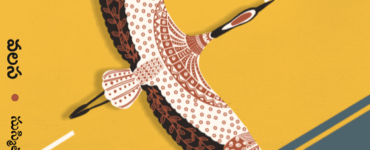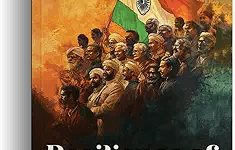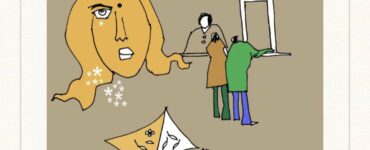- Poetry
The princely state of Jammu and Kashmir, ‘the paradise on the earth’, that was divided between India and Pakistan after the Indo-Pakistan war of 1947-48, got reorganized into two Union Territories in 2019 as Jammu and Kashmir in the west and Ladakh in the east. A great land of dazzling beauty with a serene landscape of snow capped mountains, apple orchards, saffron gardens and lulling rivulets, this region is also standing evidence to the chaotic turbulences disrupting the peace of human life.
The people of these regions speak Kashmiri, Dogri, Punjabi, Pahadi, Gojri, Ladakhi, Kohistani, Poguli, Burushaski, Bhaderwahi, Shina, and Sheikhagal languages. Kashmiri is the mother tongue of the people of Kashmir valley, Doda, Rajouri, Poonch, some belts of Ramban Tehsil, and beyond Peer Panchal. Apart from this Urdu and English also continue to be the official languages. The Kashmiris are divided between Hindus, Muslims and Buddhists and thus these parts of India are a confluence of various religions and cultures.
According to Kalhana’s Rajatarangini and Nilamatpurana the name ‘Kashmira’ takes its origin from the name of Sage Kashyapa who did penance to fight an evil power called ‘jalodbhavi’. From 5th century to about 12th century Kashmir was characterized by Hindu religion and Saivaite culture. After Asoka’s conquest of Kashmir, Buddhism got established and Saivism, Buddhism and Trika philosophy were in vogue till the advent of Islam.
Since several centuries Kashmir has remained a seat of learning and knowledge with literary, religious and philosophical discourses. Great theorists of literature like Vaamana, Udbhata, Rudrata, Anadavardhana, Mammata, Abhinava Gupta, Kayyatta, Ruyyaka and Mahima Batta belong to Kashmir. The ‘dhwani’, ‘rasa’ and ‘rasadhwani’ theories proposed by Anadavardhana, Mammata and Abhinava Gupta were the contribution of Kashmir to the Sanskrit Kaaavya school and they guided poets and critical scholars across the world. Patanjali who composed ‘Yoga Sastra’ was also from Kashmir. Kashmir has produced many Sanskrit scholars and mystics who influenced the creative world strongly.
Owing to the existing socio-economic conditions, internal fights between Hinduism and Buddhism, the efforts of Sufi saints and the intolerance of certain Kings of Islam, Kashmir gradually was dominated by Islam (Madan, 2006).
The history of Kashmiri literature may be divided into the following three periods, paralleling the other Aryan and Dravidian languages of India:
(1) Old Kashmiri, from 1200 to 1500 A.D.
(2) Middle Kashmiri, from 1500 to 1800 A.D.
(3) New or Modern Kashmiri, after 1800 A.D.
The Earliest use of Kashmiri in literature is seen as Kashmiri Apabhramsa in Kalhana’s Rajatarangini (12th century AD). Mahanaya-praka’sa by Sitikantha Acharya and Chumma-Sampradaya (anon.) were the earliest available works reflecting the oldest Kashmiri literature. Of all the genres, it was poetry that cast a huge spell over the Kashmiri literary scene.
*
Kashmiri poetry begins with the works of the great 14th century mystic poetess Lalleshwari (1320–1392). This Saiva woman-saint Lal Ded or Lalla Ded composed many poems in Kashmiri which are very popular, both among Hindus and Muslims. Lal Ded, who propounded the yoga philosophy and high moral truths in the Kashmiri verse form, was influenced by Kashmir Shaivism and Shankracharya’s Advaita Philosophy. These writings are called Lala Vakh or sayings of Lal Ded. These sayings are the gems of Kashmiri poetry and are deep in nature and sublime in tone.
This mystic poet of Kashmir draws a natural comparison with Akka Mahadevi of Karnataka of 12th Century who also was a composer of nearly four hundred and thirty mystic poems. She belonged to the Lingayat sect of Vira Saivism and preached the oneness of humanity across caste and creed and in support of the common masses. Like Lal Ded she too was a wandering mendicant, who went around nakedly with her long and thick tresses covering her nudity and was ardently admired by the vira saiva followers as well as common masses of Karnataka.
Even from her childhood Lal Ded was deeply spiritual. When she was married she had to face great pain and suffering in her marital home and by the age of twenty six she renounced the worldly family life and roamed around nakedly in the company of sadhus, saints and pi:rs. These multiple influences are replicated in the syncretism in her mystic compositions. Her mystic poems are the earliest compositions in the Kashmiri language and authentically reflect socio-political turmoil in Kashmir as well as her mystic experiences projecting her poetic genius and deeply compassionate out look at human existence with its everyday hardship. The resurrection of Kashmiri language is widely perceived and attributed to the poetic merit of Lal Ded’s nearly two hundred verse-sayings.
Her exceptional talent gets reflected in her vak as the colloquial form, replete with idioms and poetic expressions and at the same time it stands flawless and simple. She accentuates on the fact of nonexistent distinction between people of different faiths as “the sun know not the Hindu different to the Muslim” and the experience of the divine is manifest in her verse when she says,
You are the heaven and You are the earth,
You are the day and You are the night,
You are all pervading air,
You are the sacred offering of rice and flowers and of water;
You are Yourself all in all,
What can I offer You?
(Translated by R.C. Temple)
Many of Lalla-vaakhs have been preserved and carried through centuries in an oral tradition. She played a significant role as a symbol of Kashmir hood.
The earliest verse forms of Kashmiri, Vaakh and Shruk, are mainly associated with Lal Ded and Nunda Rishi or Sheikh Noorud Din (1378-1440) who is the great founder of Rishi line of Kashmir. These times in history saw gradual establishment of Islam in Kashmir when Renchen Shah (1325-27 CE) who assumed the name Sultan-Sadar-ud-din after his conversion into Islam, Mir Sayyid Ali Hamdani, who came from Hamadan of Persia along with seven hundred Sayeds, and Sheikh Nur-ud-Din to Kashmir worked for establishing Islam. This process of conversion was both voluntary and violent. If Sultan Sikander was anarchic, his son Shahi Khan was generous and tolerant towards other religions. He invited all the Kashmiri Pandits who left for fear of conversion back home.
The sayings or shruks of Nunda Rishi have been collected in the book Nurnama or Rshinama. Lal Ded was the undeniable spiritual inspiration for Sheikh Nur-ud-Din especially during the formative stage of his mystical quest. Like Lal Ded, he rejected injustice and inequality and promoted universal message of forbearance, which was widely accepted by the disadvantaged people of the Valley who had been witnessing social inequality. Nund Rishi is known for providing advice to the king on introducing justice in his kingdom, especially with reference to the lower strata of Kashmiri society. He combines the idea of unity and role of mysticism as characteristic feature both for Muslims and Hindus:
Among the brothers of the same parents, Why did you create a barrier?
Muslims and Hindus are one.
When will God be kind to His servants?
Utthasoma, Yodhabhatta and Bhatta Avatara were the important Kashmiri poets in the court of Zainul Abidin (1420-1470) who extended liberal patronage to Sanskrit language and literature. Zainul Abidin knew Persian, Hindi and Tibetan. The Mahabharata and Kalhana’s Rajatarangini we translated into Persian by his order. He had a very supportive stance towards liberal arts and literature and education. Utthasoma’s treatise on music called Manaka, Yodhabhatta’s Jainacharita and Jainaprakasa and Avatara’s Jainavilasa were important works of this period.
Later, Kashmir came under the rule of Chaks and then the Moghuls. Akbar (1555-1605) restored peace and the Moghuls added their fine taste of aesthetics to Kashmir. The period 1500-1800 AD witnessed the continuous development of Kashmiri literature. Apart from Hubba Khatun (1551-1606), a very remarkable poetess, whose lyrics on love and romance called ‘lol’ still captivate the Kashmiri people, Rupabhavani and Aranimal were the other great poetesses of Kashmir.
Known as ‘Nightingale of Kashmir’, Hubba Khatun was called ‘Zoon’ (the Moon) because of her immense beauty. She was very creative in her expression. Prince Yusuf Shah Chak, listened to her singing her melancholic melodies and on seeing her he was bewitched by her beauty. They got married and she named herself as Hubba Khatun and both of them encouraged and promoted the creative arts. The introduction of ‘Lol’ into Kashmiri (language) is attributed to Hubba Khatun. ‘Lol’ is more or less equivalent to the English ‘lyric’ conveying one brief thought full of melody and love. She also deftly used ‘vatsun / vachan’ which is a modification of the ‘vaakh’, where it forms a stanza of a poem consisting of a variable number of such stanzas and the fourth line of the stanza is used as refrain (voje). Hubba Khatun sang of love and romance.
Which rival of mine has lured you away from me?
Why are you cross with me?
Forget the anger and the sulkiness,
You are my only love,
Why are you cross with me?
My garden has blossomed into colorful flowers,
Why are you away from me?
My love, my only love, I think only of you,
Why are you cross with me?
From 1600 to 1900 there appeared many religious poets like Sahib Kaul (Krishnaavataara Janamcharitra, Lavakusachraita), Mir Abdullah Baihaqi (Koshir-Aqaid and Mukhtasar Waqayah), Parmanand (Radhaswayamvara, Sudamacharita and Sivalagan), marvellous mathnavi (spiritual couplets) and ghazal writers like Mahmud Gami, Rasul Mir, Maqbool Kralawari, and Mir Abdullah Baihaqi. Sahib Kaul, alias Anandanatha, was a great Saiva philosopher, who lived in Kashmir during the rule of Shahjahan and Aurangazeb. He was said to be a Siddha (a perfect being) by birth who had a sudden realisation of his absolute divinity when he was still a child. This awareness of his divine nature made him a poet of merit and he poured out his spiritual realisation through the medium of wonderful poetry in Sanskrit.
He described the soul in a mortal body as
What is and where is the body, and who has it? (Body also is, in fact, the Lord Himself). A soul, being bound by a body, is not (really) bound (because there is no body but the Lord Himself). As for me, I am myself Sambhu, Visnu, Surya, Ganesa, Brahma, Sakti and (even) the Almighty God. Let all prostrations be therefore to me.
Sahib Kaul who was still a child could not handle the sudden enlightening spiritual experience and so his frail body failed to receive it, consequently, he collapsed under its huge pressure. He recorded his experience thus:
Death is death for such people who undergo it. It is not so for them who realise its essence; because such people are never really born. As for me, I, transcending (the relative conceptions of) both death and immortality, shine (always) through my own lustre. Prostrations to me who is the absorber of even the god of death.
The hymns were named as Siva-Jiva-Dasaka.
Aranimal is considered the third greatest Kashmiri lyric composer of love poems. The exact date of her life is not known but she lived in the second half of 18th century. Married to a Kashmiri Brahmin scholar, she had an unhappy married life as he was paying attention to other women and deserted her. She poured out all her love and anguish into lyrics. She composed some of the greatest lyrics in Kashmiri on the themes of love and nature. She yearned for her husband and that yearning gets reflected in her love poems which are the most popular in Kashmir.
In 1753 Kashmir fell in to the hands of Afghans, who were then known for harassment and persecution and it led to the emigration of the Kashmiri Pandits to northern India. They sought the help and protection of the Sikh rulers in 1819 and Kashmir came under the rule of the Sikh kings. The British later sold it to the Dogras and during the Dogra period, the state of Jammu and Kashmir came into existence in 1846 much to the dislike of the people. In the period after 1800 AD, Kashmiri literature came under the influence of Urdu and English, apart from Sanskrit and Persian giving rise to new ideas and styles.
Rassool Mir, Mahmud Gami, Maqbool Shah, Paramanand and Wahhab Pare were some of the early poets of this period. Mahmud Gami produced note-worthy works like Yusuf-Zulaikha, Laila- Majnu and Shirin-Khusro. He also wrote a large number of ghazals.
Rasool Mir (-1870) was one of the leading Kashmiri poets of the 19th century. He was a younger contemporary of Gami but his poetry, far less in volume and variety than that of Gami, is much more chiselled and artistically consummate. He is perhaps the greatest and most immaculate master of the ghazal in our tradition. He brought ghazal to Kashmiri poetry and ghazals on rivers, valleys, birds, fruits and imagery of Kashmir were his forte. Romanticism was the dominant theme of his poetry. All his poems sing of love and beauty. The transition of the regimes as mentioned above resulted in a very volatile social, economic and political contexts. In spite of his being a spectator to exceedingly terrible common oppression and misuse, his creative compositions on the contrary carry the romantic spirit in him.
‘Chakri’ and ‘Rouf’ were the singing teams comprising singers and instrumentalists, which almost all the villages in Kashmir used to have and Rasool Mir was also a part of such teams who would travel around and sing. Though his creative oeuvre is sixty five compositions they have become an essential piece of the Kashmiri oral tradition. One is not astounded by his prominence, since his composition is near normal discourse. There is likewise an awesome craftsmanship in his decision of sound and sense. The following lyric by him is always presented as the Kashmiri traditional folk form even for today.
“Rinde Poshemal Gindnay Drayi Lo” (Taing 1984: 283)
The imperial lady is glad for her swan-like neck.
O Almighty, spare her from the hostile stare.
Your heavenly nature won’t be diminished in any capacity.
The cheerful girl has come join in the festivities.
An exponential user of all the major forms of poetry in Kashmiri — mathnavi / masnavi (a spiritual couplet), vatsun (vachan), ghazal, rouf (dance), na’at (poetry in praise of prophet Mohammed) with equal competence, Mahmud Gami (1765-1855) was the founder of Kashmiri Sufi poetry.
Sufi poetry is always a communion with God in a space-less and time-less dimension. The Sufi withdraws from the past and is not concerned about the future. The Sufi lives in the present on the path of devotion and love.
With his eleven mathnavis, and hundreds of lyrical poems, which represent a Sufi style of Kashmiri poetry, Mahmud Gami and all his later followers adapted the metaphors, similes, allegories, melodies and rhythm, as well as the fundamental leitmotifs of Islamic mysticism. He had a thorough understanding of Islamic thought, Persian poetry and religion with which he experimented in a variety of ways to imbue Kashmiri poetry with a variety of expression, wider range of themes, and intellectual depth.
Gami’s first mathnavi was Shirin Khusrav while Lailawa Majnoon and Yousuf and Zulaikha are some of his best. Other long narrative poems of Mahmud, yak hikayat, ponpirinamah, pahilynaamah are allegorical renderings of various Sufi subjects.
Here is one of his beautiful lyrics Dardi Nayistan.
With my own ears the sound of music I heard,
I shall tell you the pain of Nothingness.
The earth and the firmament, yet to be founded
Yet He glaringly stood amidst the void.
Neither any date nor a year was born,
I shall tell you the pain of Nothingness.
Falling into the tradition of devotional poets, Parmanand (1789-1885) / (1791-1879) had his poetry mainly concerned with mystical themes. He is held in high esteem in Kashmir for the unity of purpose and divinity of nature. Parmanand was educated in Persian up to the elementary stage. He wrote poetry in Persian early in life. He became a saint-poet who transcribed the Persian translation of the Upanishads under the supervision of Prince Dara Shikoh under the title of Upanikhat. He had a marvelous command over his language. He could write in a highly philosophical tone in Sanskritised Kashmiri. There was an exuberance of apt words and thought processes at his command. He wrote many songs and bhajans in a mixed Panjabi-Hindi language. He is also rightly regarded as the first Hindi writer of Kashmir. The essence of his writings can be seen in such lines as,
He is all above duality,
There is no
I or you or he in Him,
He is, because He is;
And all that, which
Appears real
In spite of being.
Unreal,
Also is He;
Yet another devotional poet and an expert of ghazals and mathanvis, Maqbool Kralawari (1820-1877) wrote both in Persian and Kashmiri while his reputation rests on his great mathnavi, Gulrez, which is a free rendering of a Persian romance by Zia-ud-Din Nakhshabi. He was educated in Persian literature and is considered the finest lyricist of the 19th century Kashmir. In his Malanama, he lacerated the ‘mullahs’ for being hand in glove with the ruthless landlords but masquerading as the defenders of virtue and the redeemers of the poor. On the other hand in his Grisynama he exposed the foibles and frivolities of the landless peasantry reduced to sub-human condition. However, his creative genius reached its zenith in Gulrez (Scattered Flowers). It is one of the best mathnavis of the 19th century.
A Kashmiri Sufi mystic poet and saint, Abdul Wahab Pare (1845-1913) was actively engaged in writing sufi devotional poems and used to attend musical gatherings throughout his life. He is primarily known for his devotional poetic book titled Verses of Wahab Khar, comprising poems in Kashmiri language. Though he did not receive any formal education, he was believed to have moral reasoning and eclectic ability. He adapted Firdausi’s Shahnama into Kashmiri and also translated the Akbarnama.
Another competent poet of the same period was Lakshman Ju who authored Nala-Damayati and a number of ghazals and short poems in Kashmiri. The Sikandarnama of the 12th century poet Nizami was translated into Kashmiri by Maulavi Siddiqullah. Kashmiri literature during this period was promoted by two European scholars, K.F.Burkhard and G.A.Grierson. The other important works of this period include Krishna Razdan’s Sivaparinaya, Dinanath’s Krishnavataralila, Waliullah Mattu’s Himal Ta Nagaraya, Azizullah Haqqani’s Gazliyat-i-Haqqani and Ramzan Bath’s Akhnandana.
Nandalal Kaul was another famous poet and dramatist of Kashmiri. The Bhagwad Gita was rendered into Kashmiri by Pandit Narayan Khar.
**
(Contd…. The Poets of the Dogra and post Dogra Period)









Add comment